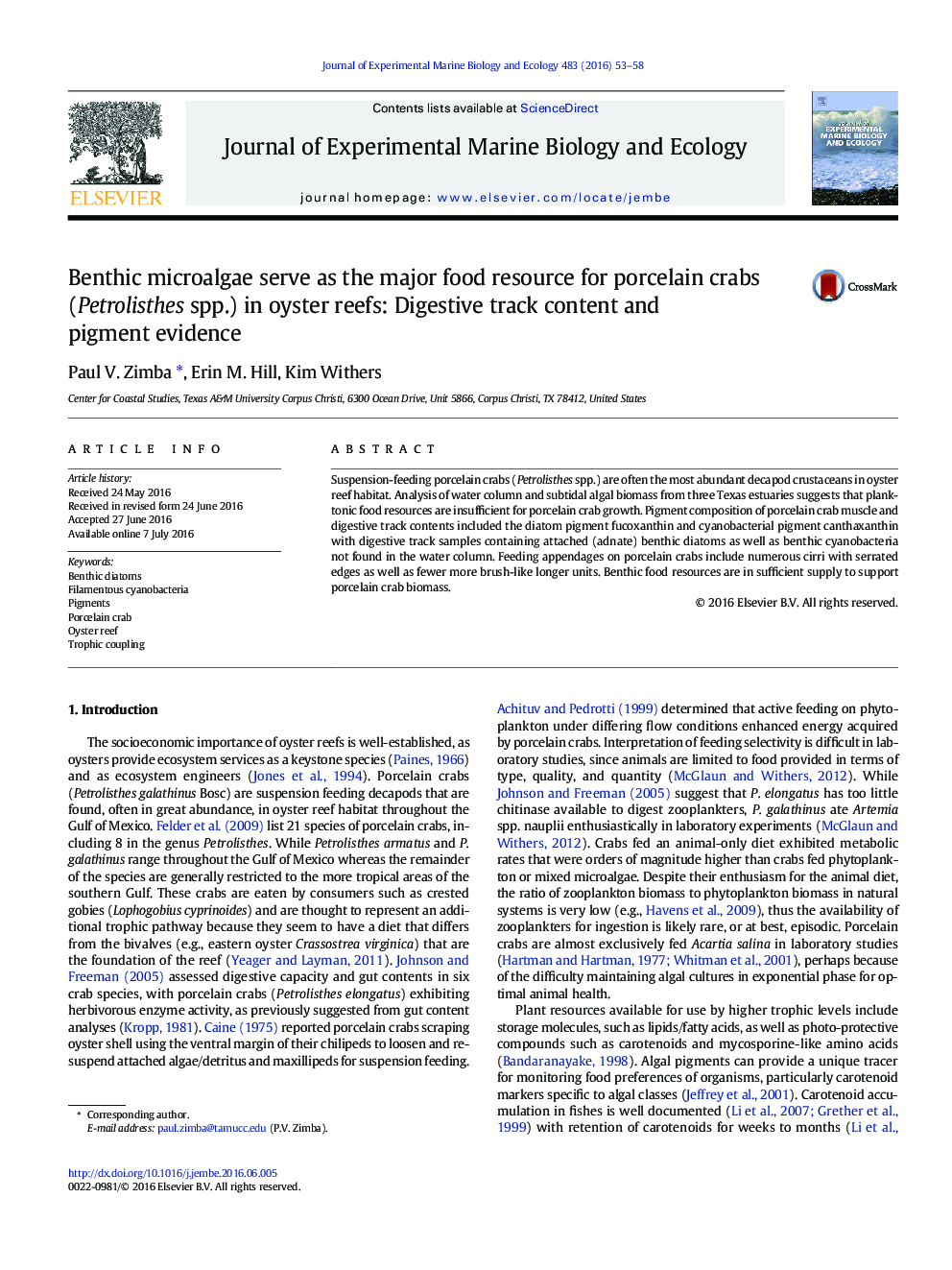| Article ID | Journal | Published Year | Pages | File Type |
|---|---|---|---|---|
| 4395216 | Journal of Experimental Marine Biology and Ecology | 2016 | 6 Pages |
•Porcelain crab digestive and muscle pigment content suggests that benthic algae serve as a major food resource.•Digestive tract content consists of benthic algae not phytoplankton.
Suspension-feeding porcelain crabs (Petrolisthes spp.) are often the most abundant decapod crustaceans in oyster reef habitat. Analysis of water column and subtidal algal biomass from three Texas estuaries suggests that planktonic food resources are insufficient for porcelain crab growth. Pigment composition of porcelain crab muscle and digestive track contents included the diatom pigment fucoxanthin and cyanobacterial pigment canthaxanthin with digestive track samples containing attached (adnate) benthic diatoms as well as benthic cyanobacteria not found in the water column. Feeding appendages on porcelain crabs include numerous cirri with serrated edges as well as fewer more brush-like longer units. Benthic food resources are in sufficient supply to support porcelain crab biomass.
